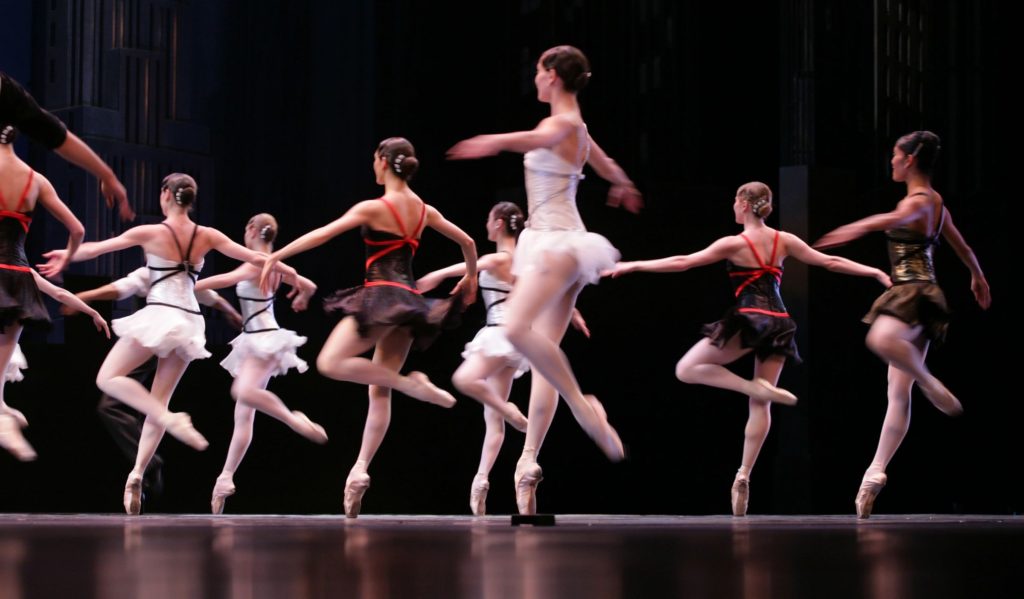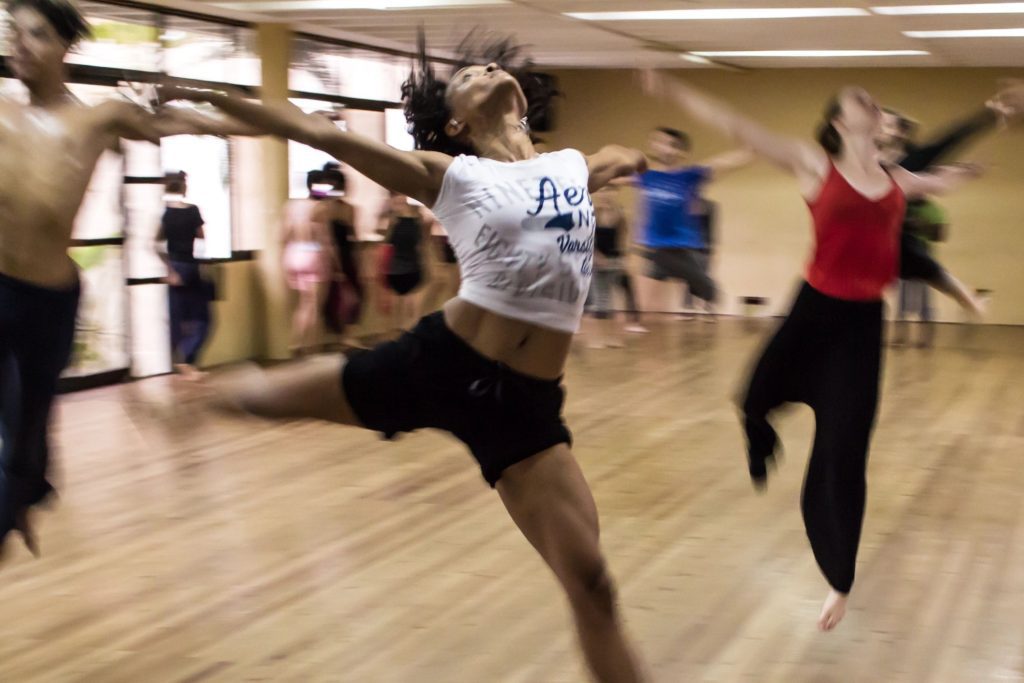by Katelyn Easter, MS, MFT, choreographer, Ballet Instructor and Creative-Arts Trained Therapist
At the young age of three, my grandma took me to see the Nutcracker of Middle Georgia Ballet. I was transfixed for the three hour performance. Never a moment did my eyes leave the stage. Immediately after the performance, I took my grandma’s hand, leading her toward the stage. I kept begging her in my child’s voice to “let me do dat”. She told me I could “do that” but it would have to be later…not right then. That night I fell in love with dance and from that moment on dance and movement have become a major part of my life…a part of me… and it helps define who I am. A few months later I was enrolled in ballet classes at a local dance studio. I have been dancing 20+ years, I’ve been a ballet instructor and no matter what–the classes never get old.

What’s so special about dance?
From the moment a child takes their first breath, they begin to move. Movement lets us express emotions without a single word. When you watch someone move, you can actually get to know more about their personality and what they are feeling.
Before becoming a therapist, I was a ballet instructor for children and adults for years. I have seen the positive impact of dance on so many people, including myself.
When I began studying psychology, I wanted to bring the benefits of dance to some of my clients. In fact, I was trained in Creative Arts Therapy in my undergraduate degree along with Psychology. While I was studying for my Masters at Northwestern’s Family Institute, I created a 6-week psychoeducational group for children ages 6-12 called “Movement Therapy Group for Children and Parents/Caregivers.”
I’ve choreographed numbers to perform for children in hospitals and used movement and expressive arts in a social skills group for family service centers. No matter where I go, I will continue to use movement and dance as a tool for my younger clients, because I have seen the impact it has on kids. It empowers them to communicate without words.
At the most basic level, dance is about communication. Communication is a fundamental human need (Sandel et al. 77), but sometimes we just don’t know how to do it, or can’t get our feelings or words out–especially kids.

Sometimes there are emotions that we simply don’t want to feel — sadness, fear, frustration–so we don’t want to admit or talk about it. Through dance, kids can safely release some of these emotions to feel relief from them.
In learning to move your body in new ways, you unlock different ways to communicate. You can express emotions that are blocked or that you just don’t understand. Using movement you can unblock emotions, vent, and express through dancing, which allows subconscious feelings to surface (Brown).
How does a therapist work with dance in sessions?
When therapists work with clients using movement, they use a technique called ‘mirroring movement’ (Zilius). Mirroring movement is just that: the therapist copies what the patient does in order to understand better what the patient is feeling. The relationship between the child and therapist is crucial for future relationships, especially in a group setting. In a group atmosphere, the patient is able to receive genuine feedback from the group members, which in turn helps them communicate with others in the “real world” (Chaiklin, Sharon, and Hilda Wengrower, 97).
How do movement groups work?
Therapy groups that incorporate dance and movement can begin in a circle formation with movements to warm the body (Levy, 207). The therapist integrates the patients’ spontaneous, authentic movements into the movement already occurring, and responds to the expressions delivered by the spontaneous movements in an empathic way (Sandel et al., 98).
It’s an amazing experience for kids to be with others sharing their emotions, in a nonjudgmental, supportive environment. Through this experience kids can gain more confidence to be in the “real world.” (Sandel et al., 98).
Through dance, kids learn that words are not the only way to express your stories, memories and feelings. They have access to them through artistic imagery or body movements.
For kids, it’s helpful that they are not just talking about their issues, but utilizing all five senses to tap into their emotions. They also connect their mind and body, which helps their body’s relaxation response. (Malchiodi).
A little bit about me…

As a Marriage and Family Therapist at Inspire Counseling Center, I want to help develop strong children, families, and communities with healthy social skills, self-confidence, self-esteem, and tools to regulate their emotions. I know how much dance has meant to me personally. I have also seen how incredible dance and movement impact children in building these healthy skills–engaging their creativity, imagination, and expression.
While I am not a certified Dance Movement Therapist at this time, my years of learning and teaching dance, training in Creative Arts Therapy and love of movement, has allowed me to help young kids to have a voice, without words or logical thinking.
I am excited to offer a one-week “Movement Camp” for kids ages 6-12 years old this summer. To register, call (847) 919-9096 ext 1 or info@inspirecounselingcenter.com

Works Cited
Akandere, Mehibe, and Banu Demir. “The Effect Of Dance Over Depression.” Collegium Antropologicum 35.3 (2011): 651-656. MEDLINE with Full Text. Web. 1 Dec. 2014.
Brown, M. (2006). Dancing through depression. Herizons, 20(2), 28-47.
Chaiklin, Sharon, and Hilda Wengrower. The Art and Science of Dance/Movement Therapy: Life is Dance. New York, London: Routledge, 2009. Print.
Esfandiari, Narges, and Somayeh Mansouri. “The Effect Of Listening To Light And Heavy Music On Reducing The Symptoms Of Depression Among Female Students.” The Arts In Psychotherapy 41.(2014): 211-213. ScienceDirect. Web. 1 Dec. 2014.
Levy, Fran. Dance Movement Therapy: A Healing Art. Virginia: National Dance Association, 2005. Print.
Malchiodi. “Expressive Therapies: History, Theory, and Practice. Expressive Therapies, Web. 1 Dec. 2014.
Payne, H, and D Stott. “Change In The Moving Bodymind: Quantitative Results From A Pilot Study On The Use Of The Bodymind Approach (BMA) To Psychotherapeutic Group Work With Patients With Medically Unexplained Symptoms (Muss).” Counselling & Psychotherapy Research 10.4 (2010): 295-306. CINAHL Plus with Full Text. Web. 28 Oct. 2014.
Sandel, Susan, Sharon Chaiklin, and Ann Lohn. Foundations of Dance/Movement Therapy: The Life and Work of Marian Chace. Maryland: The Marian Chace Memorial Fund of the American Dance Therapy Association, 1993. Print.
Zilius, MN. “Dance/Movement Therapy In Pediatrics: An Overview.” Alternative & Complementary Therapies 16.2 (2010): 87-92. CINAHL Plus with Full Text. Web. 1 Dec. 2014.




